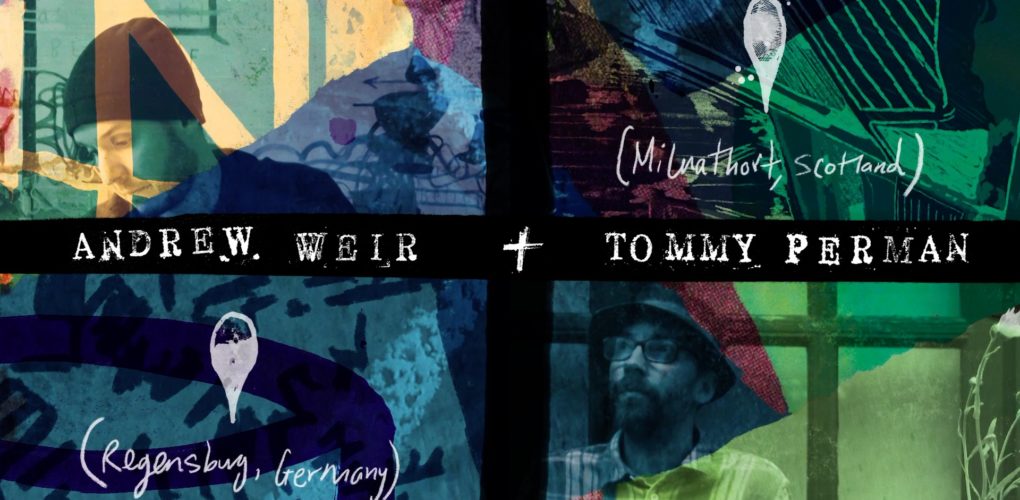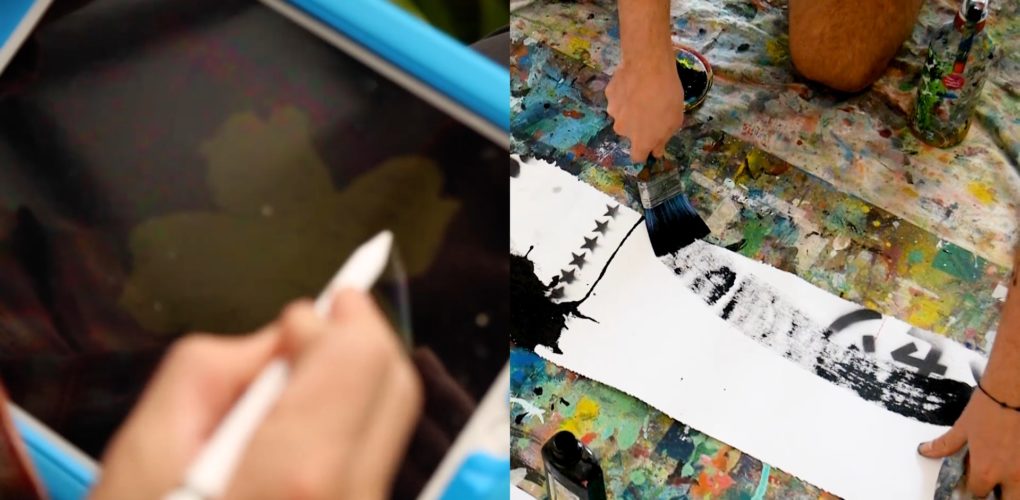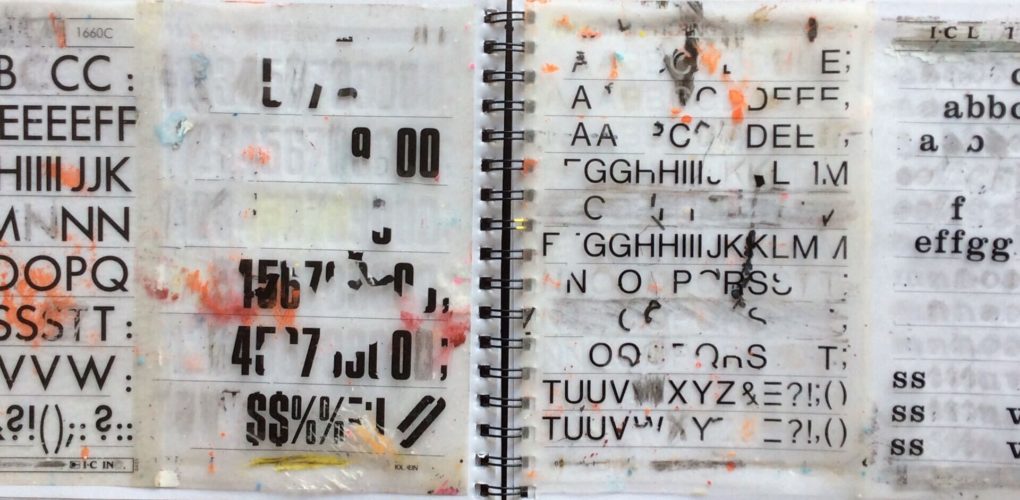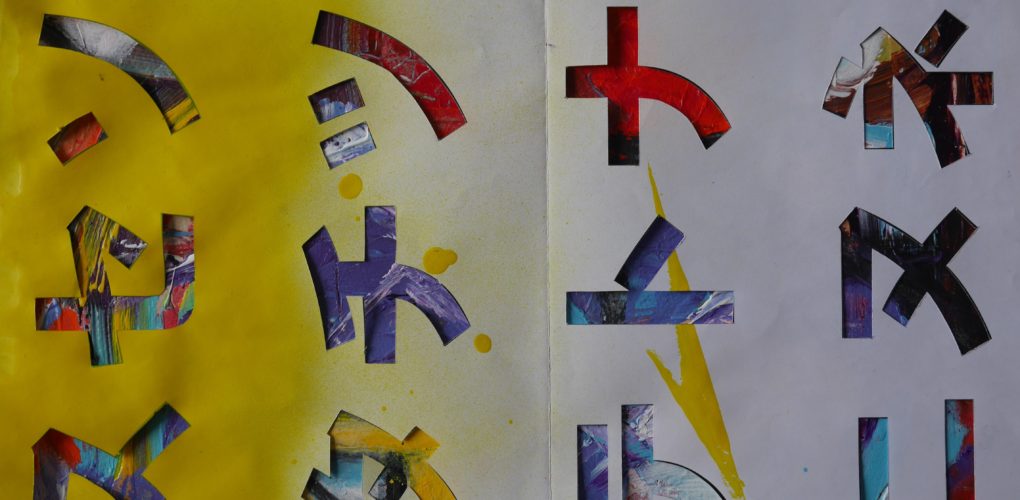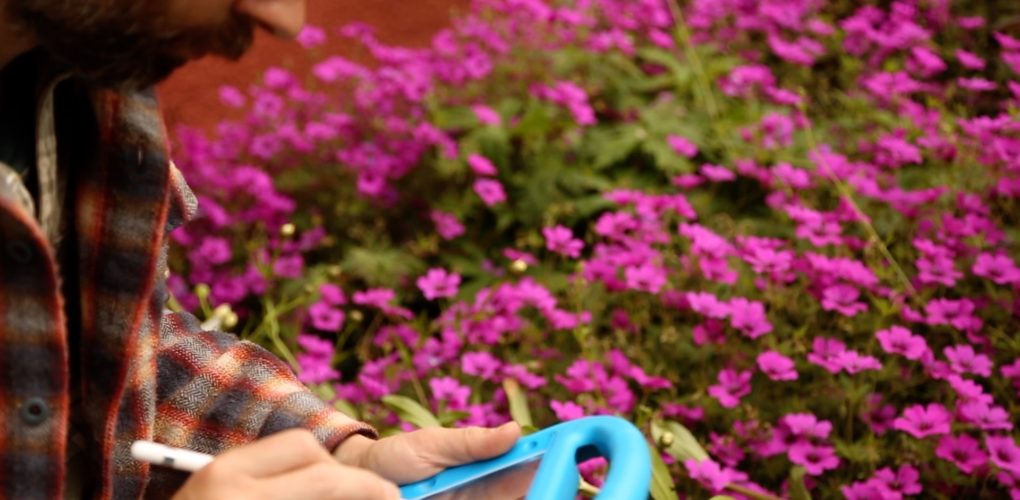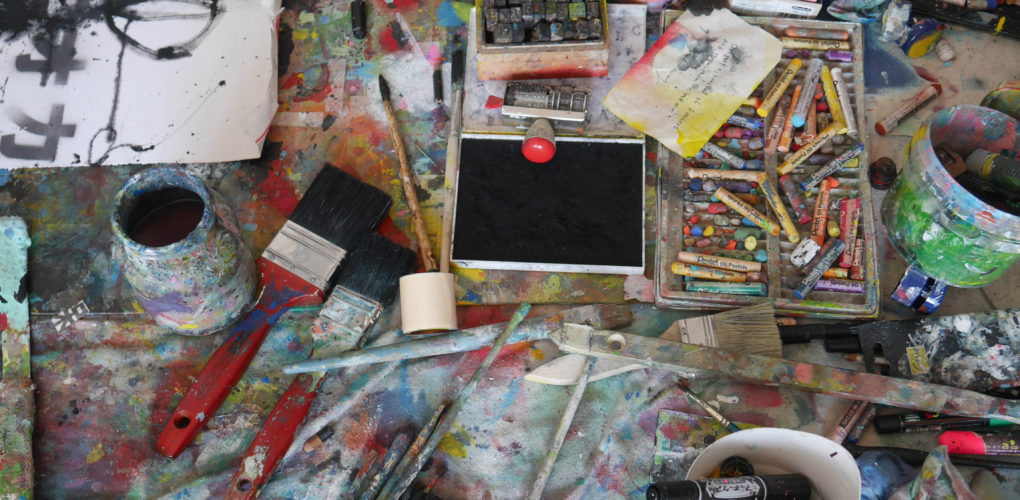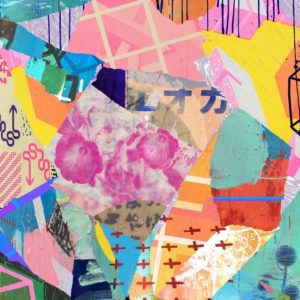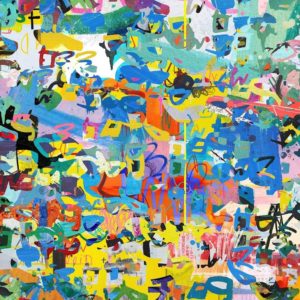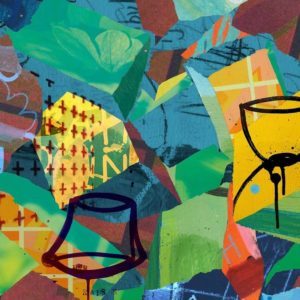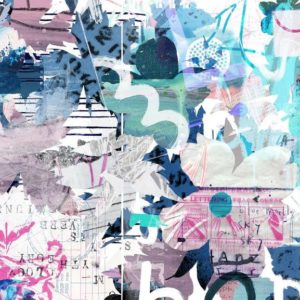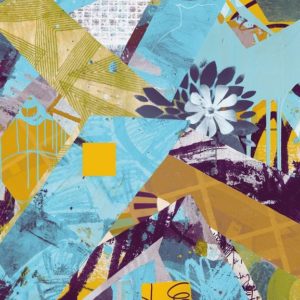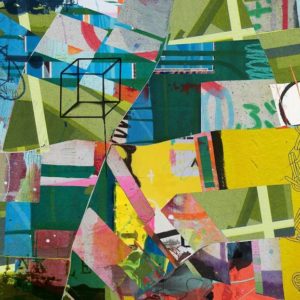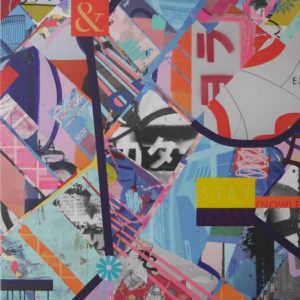Art We Love
First Look: Extraordinary Ladder by Andrew Weir and Tommy Perman
The pandemic saw many artists turn new constraints into creative fuel. While remote projects, endless Slack notifications, and Zoom fatigue have become quotidian for people around the world, longtime friends Andrew Weir and Tommy Perman saw artistic potential in our new remote reality. Discover how the artists collaborated on a new body of digital works while quarantined across countries, exploring the boundaries of communication and their own artistic practices along the way.
How did this project begin? What inspired the title?
Andrew Weir: Tommy and I have known each other since ‘98. We were roommates when we studied at Gray’s School of Art in Aberdeen and at the Maastricht Academy of Fine Arts in The Netherlands. While studying together we worked on a few collaborative projects. We have only met in person a handful of times since I moved to Japan in 2005. The project came about as I approached Tommy with a whisky-fueled idea that he should ‘remix’ or ‘destroy’ my paintings digitally. To my surprise he was up for the challenge. However, we soon decided that we should make completely new work together rather than my initial suggestion.
We have developed various digital and analogue techniques, including a Random Image Generator; [we] created our own 30 plus character alphabet with sumi ink, projected photos of artworks onto flowers and trees which were then re-photographed, made music from our images and images from music, and used satellite views of locations connected to our lives as compositional containers for our artworks, to name but a few.
The title was taken from a photograph I had taken years ago, somewhere in Japan, of a hotel fire escape sign. The emergency staircase had been translated as an Extraordinary Ladder. We found it quite an interesting and humorous collocation. As our project developed, we noted how our process had become quite complicated due to the number of steps we were using to create images. Extraordinary Ladder seemed to fit quite well. This project has been done entirely remotely as Tommy is based in Scotland and I live in Germany.
What challenges or surprises came with collaborating remotely?
Tommy Perman: We started trying to work on ideas together in the spring of 2020, and it took us quite a while to find ways of collaborating that felt comfortable. We settled on using Slack as a means of organising our conversations and keeping a nice visual record of our ideas as they developed.
As an artist with over 20 years of professional experience and a career as an art lecturer, I felt I was pretty good at taking criticism. Making the work together is really good fun but I hadn’t anticipated just how critical Andrew would be! This collaboration encouraged me to be less precious of my ideas. I really liked working with the shared goal of making better and more interesting artworks. . . .
Andrew: This is the first time that I’ve collaborated remotely. This brought with it its own unique challenges. What would otherwise be simple directions to, for example, change a specific area of the composition, relied on a precision of language to communicate the change wanted via Slack . . . Not being able to see how he was reacting to my directions or suggestions did make me worry that I was stressing him out a tad. In my own practice I will continually add, remove, redact and edit my paintings for days and weeks on end. Even so, I was surprised at how fastidious I was during this process. Sorry, Tommy. Your patience is appreciated. I owe you a pint.
Tommy: Thanks Andrew! I’m looking forward to that pint—one day. As Andrew points out, one of the challenges of remote digital collaboration was making instructions and comments clear enough that the other person could understand them. Sometimes we succeeded but we frequently took a while to understand a comment or misunderstood it altogether. These misunderstandings probably wouldn’t have happened as often if we were in the same physical space. However, I’m interested in what comes of miscommunication and how it helped us generate unexpected results.
Can you walk us through the creation of a work, from beginning to end?
Tommy: As mentioned above, we developed quite a few techniques to give us starting points for compositions. One of these techniques was to use a satellite image of a location that was significant to both of us. For Upcoming Changes To History we picked an aerial view of the countryside around Maastricht, where we’d studied together. I traced the shapes of the fields which we then used as containers to place fragments of each of our artworks. I shared work-in-progress images regularly with Andrew for his feedback, and we gradually pushed and pulled the composition together.
We created individual visual libraries—collections of our own work that could be used as elements to layer and combine in compositions. I plucked images from these libraries at random to begin with. We responded to these together commenting on what worked and what didn’t. These initial versions of compositions would often prompt us to go and make new elements to try out. So Andrew might be tasked with producing a collection of paint and ink marks, or written, painted, and stenciled text. Whereas I might head out into the woods to take photos or draw flowers.
You each have distinct artistic practices and styles. How did these come together in Extraordinary Ladder?
Tommy: Although we have come to be known for producing artwork in styles that appear to be quite different, there is a lot of common ground in our tastes and interests. We live in different countries now but we have shared histories and spent a lot of time together at quite formative times in our lives. I think we’ve retained some of the traits that made us friends in the first place—perhaps it’s partly a type of cynical Scottish humour combined with an enthusiasm for trying to understand the world through making. . . .
Andrew: I have enjoyed following Tommy’s creative output over the years. His skillset is amazing and he can do things on the technical side which I have no idea how to do. He also has a great eye for composition and understanding of typography, which I felt was something I wanted to explore in our images. Although stylistically our own work is quite different, our strengths seem to compliment each other. So far we have produced a body of work which is unique but still has each of our fingerprints on it. We also made a unique one of a kind artwork on canvas titled Her Lonely Obsession. This piece added a final process where after the image had been printed onto canvas, we planned areas within the composition for me to work directly on with acrylic, markers, oil pastel, and spray paint. I felt this was a nice way to finish the piece as it seemed quite cyclical. This is a process which I hope we will continue to develop.
And did you walk away from the collaboration with new approaches to your individual practices?
Andrew: Working on Extraordinary Ladder has definitely changed the way in which I approach my paintings. Working with Tommy taught me a lot about composition, color theory, typography, and perhaps most importantly, our collaboration has taught me new ways to try and achieve a balance between abstract, gestural mark making and more defined graphic elements in my paintings.
Tommy: I’d echo Andrew’s comments. I feel I’ve learned loads about composition and balance while working with Andrew. I think I relearned the importance of taking a step back from an artwork and taking the time to consider how I feel about a change before making another.
Once you’re no longer in a formal study setting I think it’s pretty rare to have these experiences where you are able to discuss artistic processes in great depth. It’s been amazing to gain such an insight into Andrew’s work and craft—he’s shared so much knowledge.
Communication is fundamental to this project, and the obscuring of text and information is a key visual component of the works. Could you tell us more about these concepts?
Andrew: It must be influenced by my experience of learning languages, my previous studies of the English language and consequent teaching of it. Plus, it is probably a reaction to all the times that I have looked around the neon lit streets of Tokyo and seen characters which I knew held meaning, but, at that time, I didn’t know what they said. The characters would take on an aesthetic beauty absent of linguistic meaning. I enjoy manipulating our recognition of the known versus unknown, familiar and foreign. The graphic elements of our alphabets—Roman, Hiragana, and Katakana—are a wonderful resource for image making.
Tommy: I describe myself as an artist, designer and musician and I’m fascinated in the many different ways that humans communicate through these forms.
My parents are journalists and my dad was the first person to use computer desktop publishing in Scotland in the early 1980s. So I’ve been around computers almost my whole life and I’m very familiar with designing text. As a graphic designer I’ve produced lots of typographic logos and created custom typefaces and this has crossed into my visual artworks. I love the shapes of letterforms and the look of individual words—they’re a constant source of inspiration for me. . . .
What do you hope viewers take away from these works?
Tommy: I hope the energy and playfulness of the collaboration is visible in the works. We have a record of comments we’ve made throughout the collaboration and I think these from Andrew on 7 July 2020 sum it up for me: “These are fascinating to look at. There is so much to find in these images. Whether or not others agree…”
Andrew: I echo Tommy’s thoughts—every time I look at one of our images, I notice something new within it. There is an energy within these pieces which I really enjoy and hope that others do too.
Love reading about all things art? You can have articles from Canvas, curated collections, and stories about emerging artists delivered straight to your inbox. Sign up for the Saatchi Art Newsletter.
